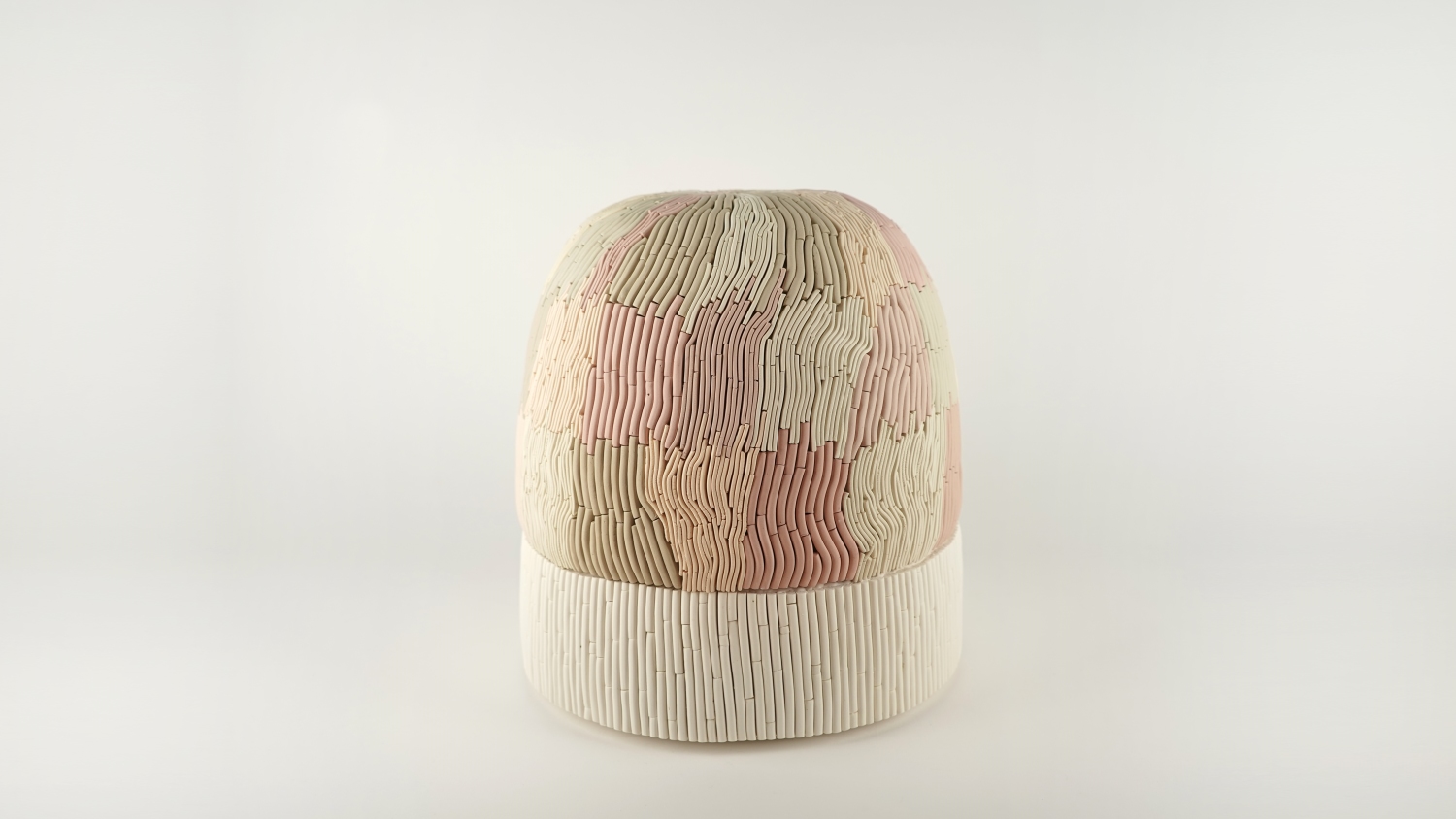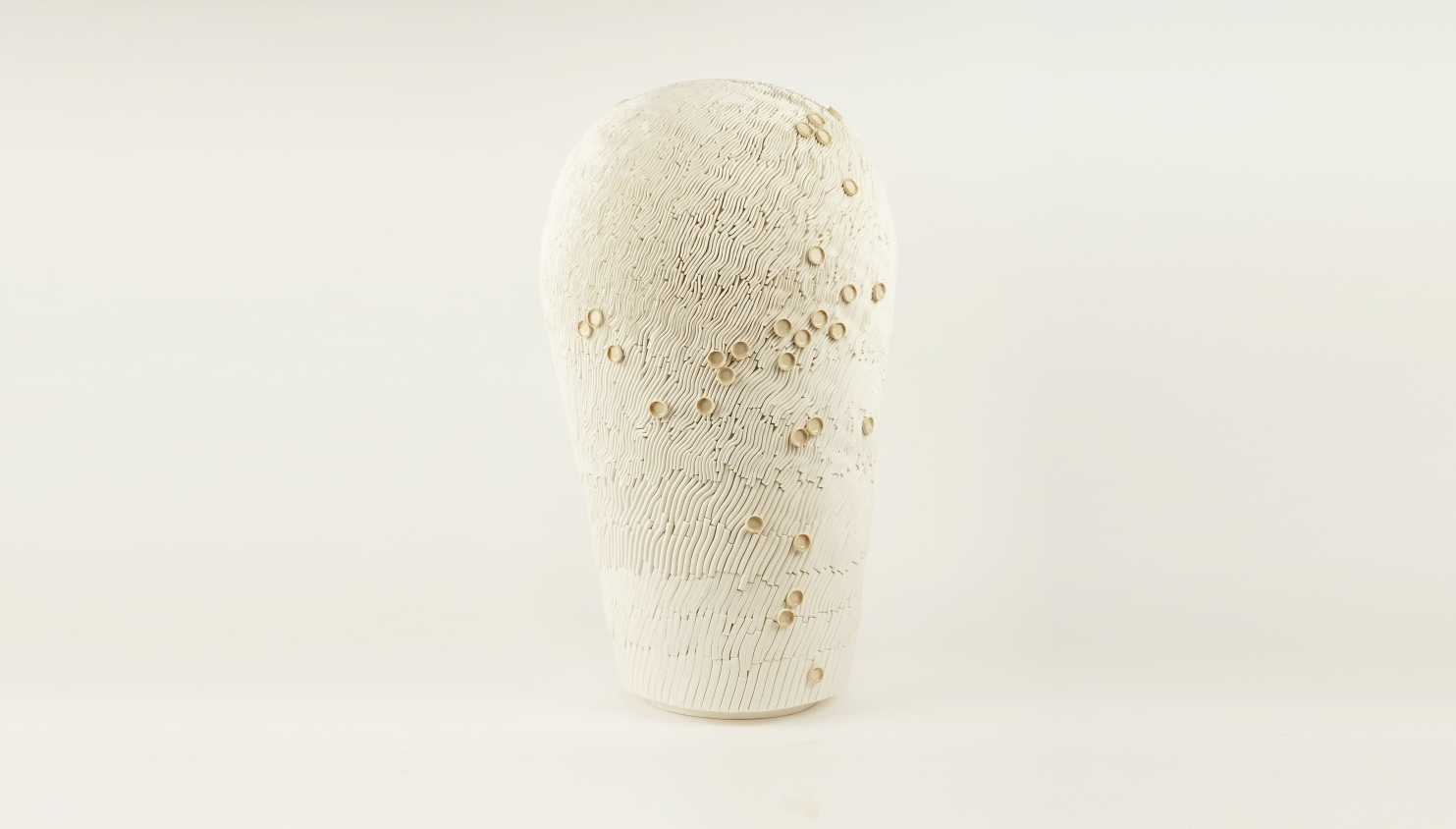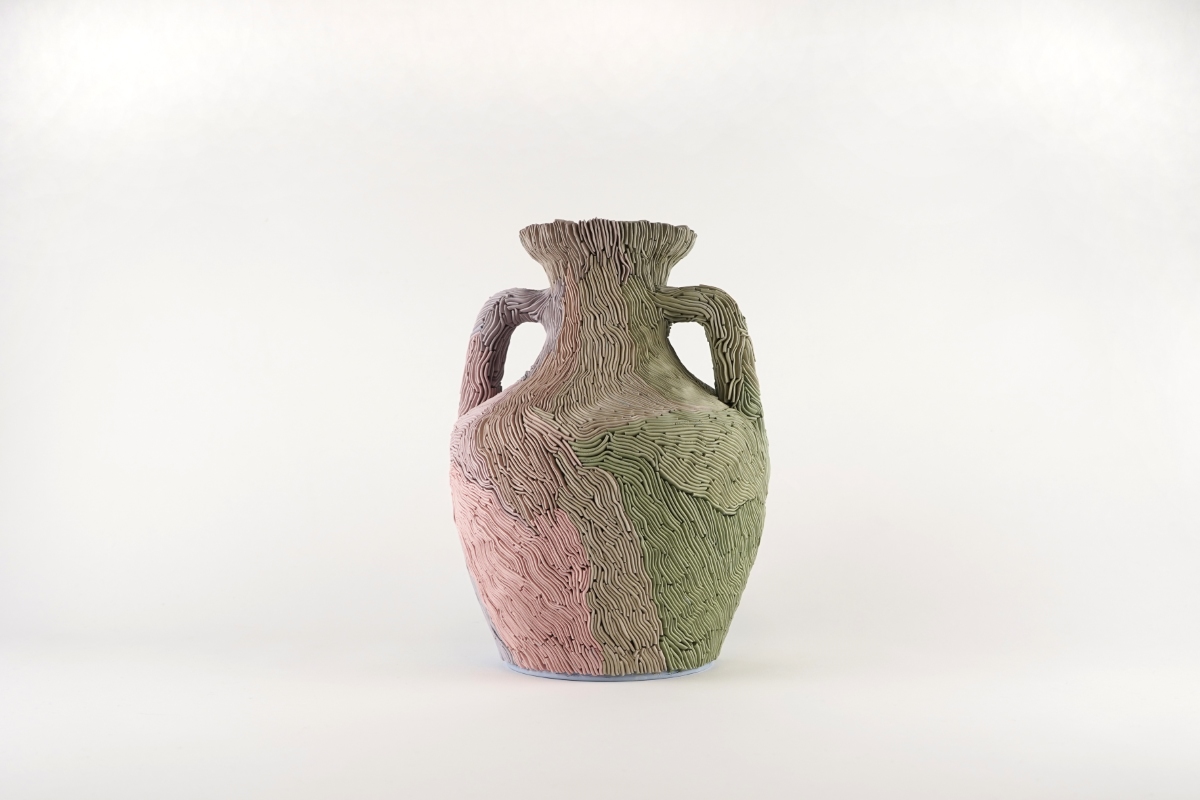Alice Walton (born 1987) is a British ceramics artist whose intriguing labyrinthine forms have attracted international recognition. With a forensic eye, Walton produces complex and multi-layered objects infused with a rich tonal blending technique. Despite their intense, textured surfaces and serpentine glazes, Walton’s work is also recognized for its calming qualities. This tension between the artist’s meditative colors and kinetic surface techniques makes each of her objects so compelling.
Walton’s desire to stave off our riddled digital reality is remedied through a process of intensely tactile molding techniques. Her work creates a time capsule of discovery for the viewer to be drawn in by intricately detailed markings that feel deliberately contemplative. Walton’s one-off abstract ceramics have been exhibited worldwide, including at the Victoria and Albert Museum, Tate Modern, Make Hauser & Wirth, Officine Saffi, and Collect 2020. She was awarded the Wedgewood Prize at the British Ceramics Biennial in 2019.
Further, she has been an artist in residence during the European Ceramic Context in Denmark, an artist in residence at the Victoria and Albert Museum, and a summer resident in Centola Pottery, Italy. In 2017, Walton was awarded the Sir Eduardo Paolozzi Travel Scholarship, and in 2018 received the Queen Elizabeth Scholarship Trust.
Walton believes the creative journey ultimately becomes part of the technique, a philosophy that first emerged during her academic studies. She received a Postgraduate (MA) in Ceramics from the Royal College of Art in 2018. She also completed an Undergraduate BA (Hons) Degree from the University of Brighton, where she was awarded a Distinction in Wood, Metal, Ceramics, and Plastics.
Visit Alice Walton’s website and Instagram page.
Featured work
Selected works, 2021-2023



Alice Walton crafts individual components from clay to create abstract scenes. Through a technique of repetitive and ritualistic mark-making, in turn, her work mimics the constant review of familiar objects we see on our daily commutes. Walton’s references, sometimes mundane and nostalgic, form a collage of photography, drawing memories and backbone to her work. Grounded by this research, her work pivots away from the literal into the imaginary and abstract.














